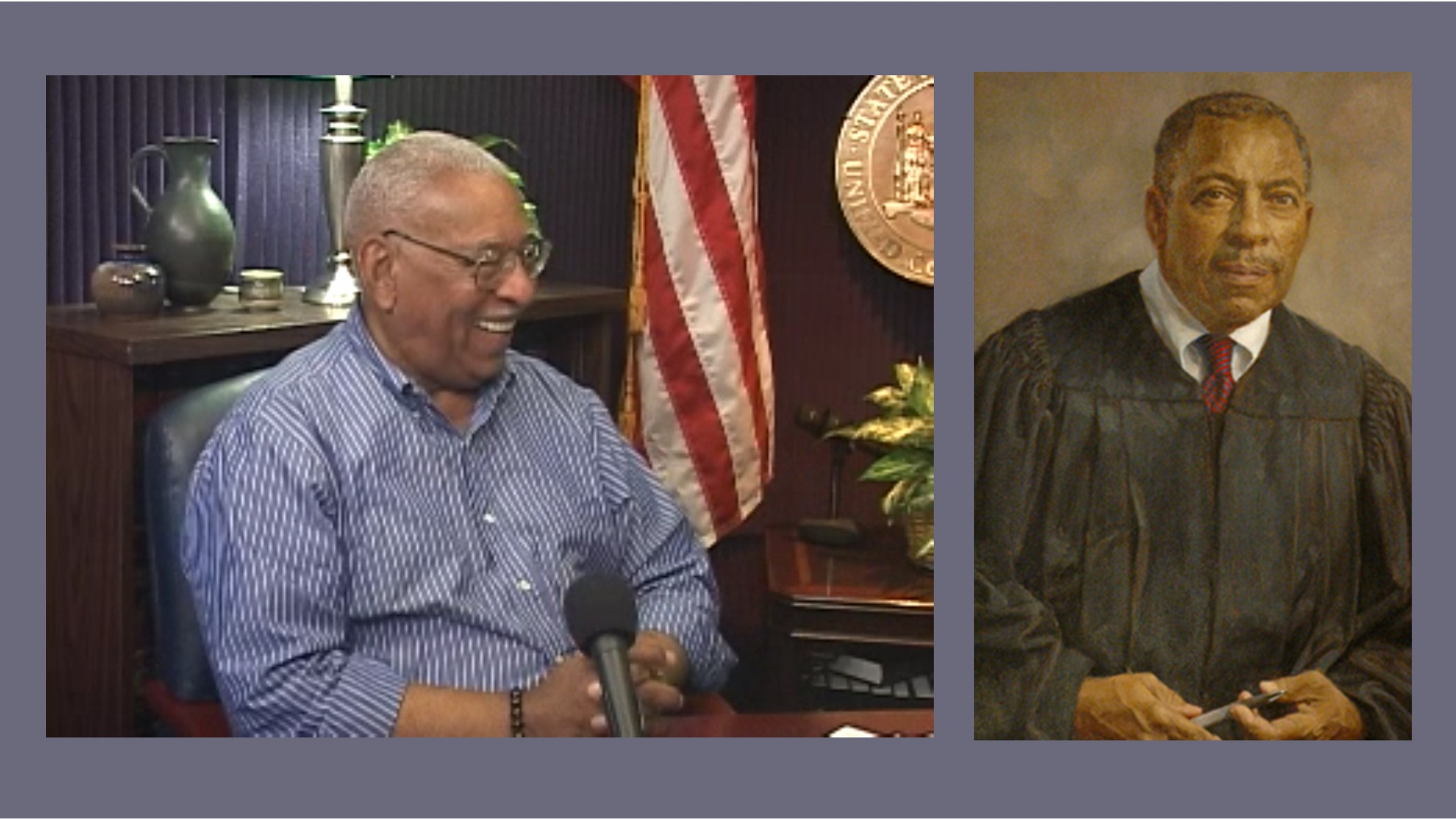In 2021, the Society is celebrating Black History Month every month, spending the year looking back at the impact of Black New Yorkers on the legal history of the state.
We are continuing the celebration with some of the pioneering Black judges in the New York State judiciary. The Society’s Oral History Project has given us the opportunity to record the reminiscences of Hon. George Bundy Smith and Hon. William C. Thompson. Both judges experienced racism early in their careers, but were able to overcome these early experiences to become preeminent jurists in the State and figures in their communities.
Hon. George Bundy Smith (Associate Judge of the Court of Appeals, 1992-2006) describes his time as a Freedom Rider during the civil rights movement of the 1960s:
Coming back to Yale, in May 1961, one Sunday morning, I picked up a copy of the New York Times and I read that a bus had gone into Alabama. Persons there had been taken off the bus and beaten. And that really disturbed me. It just so happened that that Sunday evening, Reverend [Doctor William Sloane] Coffin [Jr., a leader of the program Crossroads Africa] called me and said, “We’re going to take a ride. We can’t let this situation continue in the South.” So to make a long story short, on that following Wednesday we flew from New York to Atlanta and we took a bus from Atlanta to Montgomery, Alabama…
When we got into Montgomery there was an angry mob at the station. But fortunately, then-President John F. Kennedy[1] had called out the National Guard and we were protected. We went to the home of Martin Luther King, had a very, very, very delicious dinner and we discussed whether or not we should go on from Montgomery, Alabama to Jackson, Mississippi the next day… And we collectively decided to go on.
Now, Martin Luther King at that time was under some kind of court order in Alabama to, in essence, stay put. So he did not go to the bus station with us the next morning. But 11 of us went to the station and we all sat down at a lunch counter. I ordered a cup of coffee, which I got. And all of a sudden I got a tap on a shoulder and a person said, “You’re under arrest.” So that all 11 of us were arrested.
Those who were white went to one jail. Those who were African American went to a separate jail. We were there only for a relatively short time. But I can remember that during that time we would sing songs, we would talk about why we were there, why we had decided to come on the Freedom Ride.
And as the result of that, we from the north were convicted. We were convicted a second time and then we appealed to the appellate court in Alabama, which confirmed the conviction by two-to-one vote. The case then went to the Supreme Court of the United States and in 1965, four years after our arrest in May 1961, the United States Supreme Court unanimously vacated our convictions, citing the case of Boynton against Virginia.[2]
Hon. William C. Thompson (Associate Justice of the Appellate Division, Second Department, 1980-2001) describes his work as Regional Director of the NAACP, and a civil rights case that he views as highly important to the movement.
They were absolutely gorgeous times [as Regional Director of the NAACP]. You met people from all over the country, white and black, I might say. It wasn’t limited just to black people. The first day of every NAACP convention, all the lawyers from the country came in to meet with Thurgood, and Bob Carter, and Jack Greenberg, and Connie Motley, and Wally Grant in Little Rock, and guys from Alabama, and Bob Ming, from Chicago… And we discussed trying cases, approaches, techniques, how to go, where to go, what to do, what courts to reach, and how to get into these various courts…
[One] key case was Briggs v Elliot.[3] And it came out of Clarendon County, South Carolina. And the judge down there was a guy named Waties Mainwaring [sic].[4] Federal court judge. A patrician, who had been nominated for the federal court, and became the judge in the federal court in Charleston, South Carolina. And there was, this Briggs child used to walk eight miles every day to school. And across the road lived the little white kid who was able to get bused. And he asked the school board, “Why can’t we go on the bus?” They said, “No way you’re going to go on the bus.” Besides, they’d allotted $40 per year for each black child, and $500 for each white child. So Briggs came to the NAACP, which was at 20 West 40th Street, in those days. And they asked Thurgood and them to represent them. And Thurgood went down, and Mainwaring [sic] said, “Why are you attacking buses? Why don’t you attack the whole system? Because it’s discriminatory.” And that’s exactly what they did. And he called it unconstitutional. Then it went up to the Fifth Circuit, and it was two to one. Mainwaring [sic] voting it unconstitutional. And that was one of the cases that went before the United States Supreme Court in Brown v The Board of Education.
Catch up on the rest of our Every Month is Black History Month posts.

